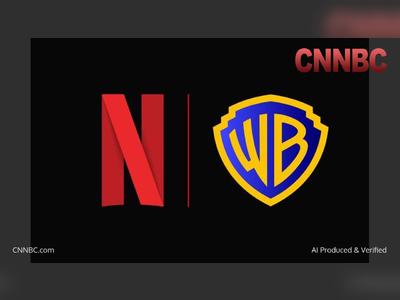Brands Confront New Dilemma as Extremists Adopt Fashion Labels
Far-right activists in the UK and US have been seen wearing brands such as Stone Island and Fred Perry, forcing companies to address unwanted political associations while maintaining their core identities.
When right-wing demonstrators filled the streets of London in September, more than one hundred and ten thousand people joined protests against immigration.
Amid the sea of Union Jacks and St George’s Cross flags, another image stood out: the compass logo of Italian fashion label Stone Island.
The brand’s green, yellow, and black emblem appeared on the jackets of Stephen Yaxley-Lennon—better known as Tommy Robinson—and several of his supporters, including podcaster Liam Tuffs.
Robinson, a co-founder of the English Defence League, has often been photographed wearing Stone Island at public events, including outside a London court in June, where he faces charges of harassment and causing fear of violence.
He has pleaded not guilty, with a five-day trial set for October twenty twenty-six.
Neither Robinson nor his allies have claimed Stone Island as a political symbol, but the brand’s visibility among far-right circles has not gone unnoticed.
For global fashion brands, the situation underscores a persistent challenge: they cannot control who wears their products.
Yet when their clothing appears in extremist or violent settings, the association can be damaging.
Experts warn that brands must respond carefully to prevent misappropriation without alienating legitimate customers.
Stone Island’s connection to Britain’s football ‘casual’ culture partly explains its adoption by certain nationalist groups.
Since the 1980s, its technical jackets and distinct patches have symbolized exclusivity, loyalty, and identity among soccer fans—a subculture that once included violent hooligan factions.
Sociologists note that some far-right activists view the brand’s heritage as a reflection of pride and tribal belonging.
Stone Island, now owned by the Moncler Group, has not issued a statement on the matter.
Founded in 1982 by designer Massimo Osti, the label remains a global icon of technical streetwear and innovation.
Despite record revenues in recent years, its links to working-class and football subcultures continue to shape its image.
Other fashion brands have faced similar situations.
Fred Perry halted sales of a black-and-yellow polo shirt in 2020 after it was adopted by the Proud Boys in the United States.
Luxury label Loro Piana faced criticism when Russia’s president was seen wearing one of its coats during a televised rally.
Each case demonstrates how easily fashion symbols can be repurposed by political groups.
Analysts emphasize that extremist movements increasingly avoid overt symbols, opting instead for everyday styles that blend in.
Fashion has become “the new camouflage,” allowing ideologues to spread messages discreetly.
Some brands, like Lonsdale, have responded by publicly supporting anti-racism initiatives, helping reclaim their image.
The broader challenge remains: while brands cannot choose their customers, they can define how they respond when their creations become symbols of ideology.
Amid the sea of Union Jacks and St George’s Cross flags, another image stood out: the compass logo of Italian fashion label Stone Island.
The brand’s green, yellow, and black emblem appeared on the jackets of Stephen Yaxley-Lennon—better known as Tommy Robinson—and several of his supporters, including podcaster Liam Tuffs.
Robinson, a co-founder of the English Defence League, has often been photographed wearing Stone Island at public events, including outside a London court in June, where he faces charges of harassment and causing fear of violence.
He has pleaded not guilty, with a five-day trial set for October twenty twenty-six.
Neither Robinson nor his allies have claimed Stone Island as a political symbol, but the brand’s visibility among far-right circles has not gone unnoticed.
For global fashion brands, the situation underscores a persistent challenge: they cannot control who wears their products.
Yet when their clothing appears in extremist or violent settings, the association can be damaging.
Experts warn that brands must respond carefully to prevent misappropriation without alienating legitimate customers.
Stone Island’s connection to Britain’s football ‘casual’ culture partly explains its adoption by certain nationalist groups.
Since the 1980s, its technical jackets and distinct patches have symbolized exclusivity, loyalty, and identity among soccer fans—a subculture that once included violent hooligan factions.
Sociologists note that some far-right activists view the brand’s heritage as a reflection of pride and tribal belonging.
Stone Island, now owned by the Moncler Group, has not issued a statement on the matter.
Founded in 1982 by designer Massimo Osti, the label remains a global icon of technical streetwear and innovation.
Despite record revenues in recent years, its links to working-class and football subcultures continue to shape its image.
Other fashion brands have faced similar situations.
Fred Perry halted sales of a black-and-yellow polo shirt in 2020 after it was adopted by the Proud Boys in the United States.
Luxury label Loro Piana faced criticism when Russia’s president was seen wearing one of its coats during a televised rally.
Each case demonstrates how easily fashion symbols can be repurposed by political groups.
Analysts emphasize that extremist movements increasingly avoid overt symbols, opting instead for everyday styles that blend in.
Fashion has become “the new camouflage,” allowing ideologues to spread messages discreetly.
Some brands, like Lonsdale, have responded by publicly supporting anti-racism initiatives, helping reclaim their image.
The broader challenge remains: while brands cannot choose their customers, they can define how they respond when their creations become symbols of ideology.












